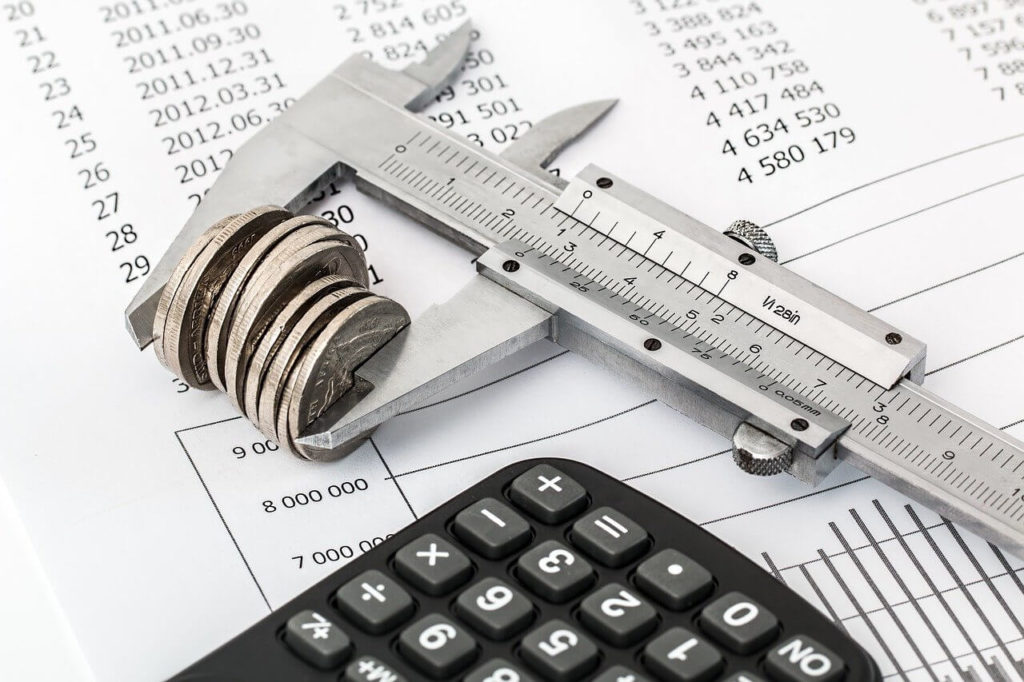
I swear nearly every time I hear a podcast or read an article aimed at web agencies, the "feast or famine" cycle gets a mention.
If you haven't already heard of it, it's the tendency for web agencies to have a ton of work on all at once, right before a slow period where we struggle to make ends meet. And then of course, a bunch more projects come in, all at once starting the cycle again.
It's one of those things that too many of us are familiar with. It's pretty easy to get into a cycle like this, especially as a small team. When there is work on, you need to get it done so you don't spend as much time networking and marketing.
Then you finish all that work and start trying to find leads again. Because of the lag time between putting the time in and converting leads, it can be a while before you've got more cash coming in. Even if you're being a good little business owner and splitting your time between sales and actually doing the work, these cycles still seem to happen.
The Budgeting System
Over a year ago I read a book that completely changed the way we use our money. The rest of this post is based around this book. To be completely honest, this isn't rocket science. But I think it's a really important thing totally overlooked by a lot of people and businesses.
At the simplest level, it's just putting certain amounts of money away into different bank accounts for different purposes. So when something like a tax bill comes up, it just comes out of your tax account. You know you've got money there set aside for exactly that purpose.
That means zero stress. That's the important bit. We can all do with less stress. Following this practice makes a huge difference in stress, at least for me.
What blows my mind the most about all of this is how simple it is. For years, I'd been doing almost the exact same thing with my personal finances. I have an account for bills, where I've calculated all my recurring expenses (utilities, insurance, etc) and automatically pull that amount, plus a little extra, into a dedicated bills bank account each month. There's an account for my mortgage repayments (previously rent), one for food, and recently one for toys. It's been working extremely well for a long time. Yet for some reason, I never thought to do this with our business.
D'oh.
The Process
This is a super quick summary. I'll dig into more detail below, and for even more you can read the book.
All income comes into one account. Twice a month, enter the amount of income into a spreadsheet, which uses some simple percentages to divide that money into our other accounts. Then it's a simple matter of transferring those amounts into the other accounts.
The Accounts
Income
The income account is used for nothing but money coming in. It's the one listed on all our invoices that people pay into. It's where our Stripe and Paypal accounts pay into. Everything gets divided into the other accounts from here, and I usually leave a little bit left over in case some bank fees get drawn out.
Founder Pay
The account set aside to pay our founder salaries out of. These come out once a month. You're paying yourself a salary, right? (You should be)
Expenses
Any money we pay people comes out of this account. Or if we're using a credit card, this account is used to pay it off. This is where a bulk of our money ends up. By looking at this account and your credit card, you can see all money going out. That makes it really easy to find subscriptions that you aren't using or bills that can be reduced.
Tax
In my internet banking this one sits in a different "category" called "The Government's Money". It's way down the bottom where I never see it... because it's money that isn't ours and it should not be used for anything else. I use this account for a few things, so I've bumped up the amount that goes in here.
- GST (or whatever tax applies on all sales)
- Company tax (end of year, or quarterly installment tax
- Tax on salaries (PAYG in Australia)
- Super (what you'd call 401k)
This is all stuff that is legally committed at some point, but we don't have to pay it until later. Having money set aside for these things is probably the most important part of all this, at least for me. MAJOR stress reducer.
Profit
Despite this being based on "Profit First", I've gone and put the profit account last. I'm also not sure it should be called "profit", as its purpose is more for setting aside money so you have something to call on in case something screws you that you didn't see coming.
Profit First says you should also use this account for "fun". Specifically, paying the founders 50% of the money that goes into this account, kind of like a bonus, to be used on actual fun - stuff you wouldn't normally buy or do.
This account should be in a totally different bank so you never see it, or totally forget about it like I do. It's a good feeling when you have no money but then remember you've got this little cushion stored away.
We used it for the first time recently, when an outstanding invoice came in late - we needed to pay salaries before the payment came in and could not have done it without this as backup. Again, MAJOR stress reducer.
Target Percentages
The amounts you put into each account are generally dictated by a lookup table based on your revenue. Lookup table is available here - look for the "Instant Assessment" and see FIGURE 1 on Page 2. Example, for a business with $300k turnover, you fall into category “B (250-500k). Your allocations would be something like:
- Expenses - 40%
- Pay - 35%
- Tax - 15%
- Profit - 10%
I've slightly adjusted mine to take into account super (401k), PAYG (tax on salaries) and our PayPal account (see below).
Thoughts & Objections
I know there are some of you reading this right now thinking you barely have enough to get by, let alone be putting money aside into all these other accounts.
Firstly, the tax account is not an option, it's a necessity. It's not even your money. You simply have to do this, or you'll be even worse trouble later.
With the profit account, the recommended action is to start small. Maybe with 1% of income at first. Each month, increase it by maybe a percent until you hit the goal, usually 5% for a freelancer. Baby steps. You'll be so happy you did this later.
The book also talks about paying your bills as part of the process, on the 10th and 25th of each month. In the modern day this doesn't really work as subscription services just come out whenever they want. I handle this by putting most of them on a credit card and paying the credit card off as part of the process.
Spanner in the works - PayPal
One thing not discussed in the book is PayPal. It doesn't really fit the model of having one account where all money comes in. Our PayPal gets used for both money in AND out, which makes it a bit more difficult to account for. I work it in by, each time I run the calculations (twice a month on the 10th and 25th):
- Exporting all activity for the previous period and pasting into a tab on my spreadsheet
- Reducing the amount that gets paid into the Expenses account by the amount that has come OUT of PayPal (those are expenses already spent)
- Paying out the difference to our bank account and distributing that as income
This isn't perfect, but it's close enough for me.
Getting Started
Once you've got into the habit, this is all really easy and can make a huge difference for your business. The initial setup can take a bit of time, especially if your bank is a pain in the ass like mine and requires lots of docs to open new accounts (even though they already know everything about you.... go figure)
- Open 3 new accounts at your main bank (4 total) - 2 of these need to be able to receive or send money to other banks*
- Open 1 account at another bank
- Give them all nicknames in your internet banking so you know which one is which
- Make sure all direct debits and expenses come out of the new expenses account, or credit card (not the income account)
- Create a recurring reminder to to your distributions every 10th and 25th
* Some banks have accounts that can only transfer internally. You need one account to receive money from others, and your expenses account should be able to send money out. You can always transfer through one account if necessary.
Further Reading
If you’re interested in reading the full book, grab it here (or get the audiobook version). It goes into all this in so much more detail, and explains when & why to use money that has built up in your profit account for fun. If you can’t be bothered with the full book, at a bare minimum open a couple of accounts and put money aside for tax and bills. It’ll save you tons of stress.



